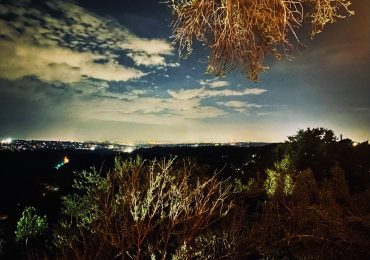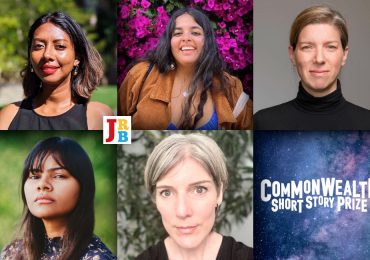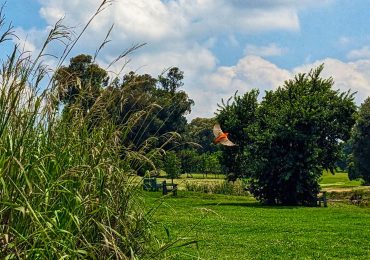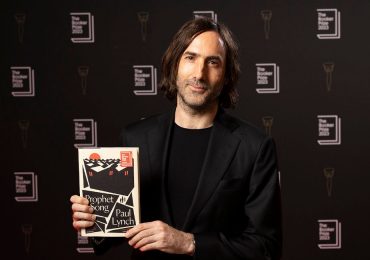 Welcome to the second issue of Volume 2 of The Johannesburg Review of Books.
Welcome to the second issue of Volume 2 of The Johannesburg Review of Books.
This month, we are excited and proud to be the first publication to feature an excerpt from our City Editor Niq Mhlongo’s much-anticipated forthcoming collection of short stories, Soweto, Under the Apricot Tree.
In addition to this piece of fiction, we feature an excerpt from Marcus Low’s novel Asylum, which was recently shortlisted for the 9mobile Prize, as well as a new short story from Stacy Hardy.
Our Photo Editor Victor Dlamini pays tribute in pictures to Hugh Masekela, the jazz icon, who passed away in January.
In this month’s big interview, we chat to acclaimed author Rehana Rossouw about her new novel, New Times.
For fans of non-fiction, Lebohang Mojapelo reviews Sasha Polakow-Suransky’s new book on immigration and the rise of the right, Go Back to Where You Came From; TO Molefe assesses I Am Not Your Negro, a year after the dual book-film release, and Kibo Ngowi considers Ta-Nehisi Coates and the cult of intersectionality.
Wamuwi Mbao reports from JM Coetzee’s reading at the exhibition of his childhood photography, and also reviews Ben Okri’s latest book, The Magic Lamp.
Diane Awerbuck mostly does not review (or enjoy) Stephen and Owen King’s Sleeping Beauties, while in our Temporary Sojourner series, Contributing Editor Efemia Chela reads The Ultimate Tragedy, the first novel from Guinea-Bissau ever to be translated into English.
Poetry fans will be delighted to see three poems by Shailja Patel, including two that are previously unpublished.
In Francophone news, we note new allegorical short fiction from Algerian writer Chawki Amari, and a timeous love poem by Mauritian poet Khal Torabully.
Finally, in our letters section, Sarah Ruden responds to David van Schoor in the last of our translating Augustine correspondence.
Our cover image this month features a painting of a bonobo by the artist then known as Veronika (now known as Ben Jay Crossman), created as part of the Westdene Graffiti Project. Through the project, homeowners offer their walls to various artists to be decorated, with the proviso that the artist is given free rein over the concept, with little to no input from the owner. Westdene happens to be my neighbourhood, and this wall is right around the corner from where I live. The bonobo was one of my favourite pieces; its scale and brightness were quite astounding to behold first hand, and it formed an affecting contrast with the charmingly ramshackle home that served as a backdrop. I say ‘was’, because the work recently disappeared. It transpired that it had been vandalised and was painted over by the house’s owner.
With a higher-than-average number of our reviewers finding fault with their allotted books this month, the tale of the Westdene bonobo offers a timeous real-life examplar of perceived value and critical mutability. But rather than erasing the bonobo, The JRB would prefer to argue about it, add to it, and in doing so appreciate its value. The bonobo lives on.
Here’s the complete breakdown of Vol. 2, Issue 2, which you will also find on our issue archive page:
Interview
Reviews
- A flawed take on immigration and the rise of the right: Lebohang Mojapelo reviews Sasha Polakow-Suransky’s Go Back to Where You Came From
- [Temporary Sojourner] Efemia Chela reads The Ultimate Tragedy, the first novel from Guinea-Bissau ever to be translated into English
- Ben Okri demonstrates the value of dreams in a ramshackle world: Wamuwi Mbao reviews The Magic Lamp
- Diane Awerbuck mostly does not review Stephen and Owen King’s Sleeping Beauties, but mostly remembers her mother, horror fan supreme
Photography
Excerpts
- [City Editor] Read an exclusive excerpt from Niq Mhlongo’s forthcoming book: Soweto, Under the Apricot Tree
- ‘These were not men fighting, but corpses’—Read an excerpt from Marcus Low’s Asylum
Poetry
Short fiction
Essays
- JM Coetzee is tired: Wamuwi Mbao reports from the ‘Photographs from Boyhood’ exhibition in Cape Town
- Exquisite, but a reminder that there will never be another Baldwin: TO Molefe appraises I Am Not Your Negro, a year after its release
- Ta-Nehisi Coates is not the voice of black people: Kibo Ngowi considers the cult of intersectionality
Francophonie
- Snapshots of Death: Allegorical short fiction from Algerian writer Chawki Amari
- Sea-shaken love from ‘The Cargo Hold of Stars’ by Mauritian poet Khal Torabully
Letter
The JRB Daily
- 2018 9mobile Prize for Literature shortlist announced
- The early years: Read an excerpt from Hugh Ramapolo Masekela’s autobiography, Still Grazing
- Hugh Ramapolo Masekela, legendary jazz musician, RIP
- [Photo Editor] Listen to Victor Dlamini’s 2007 interview with Mmatshilo Motsei on her book The Kanga and the Kangaroo Court
Header image: Jennifer Malec





